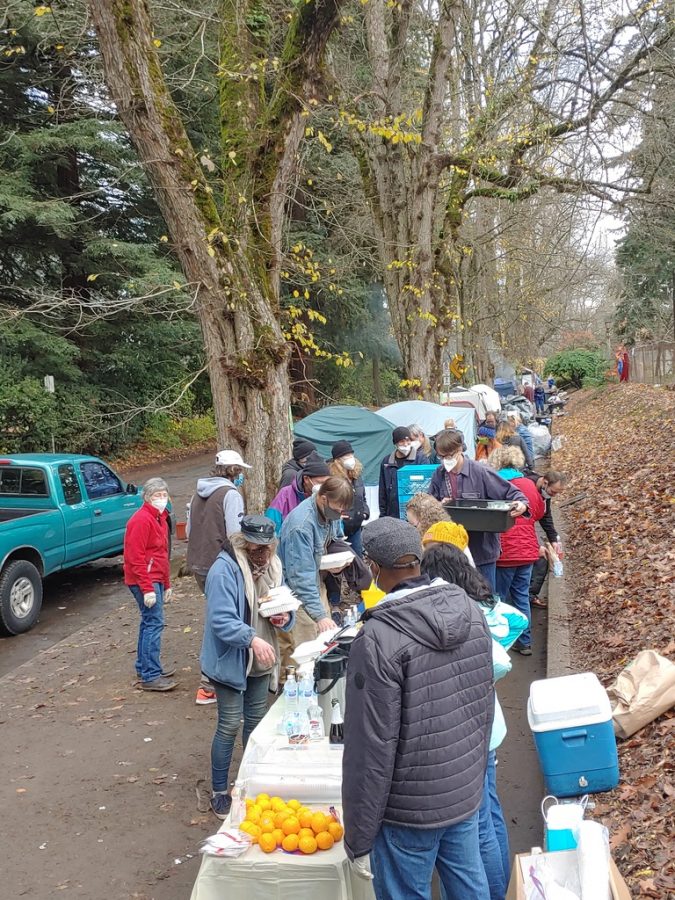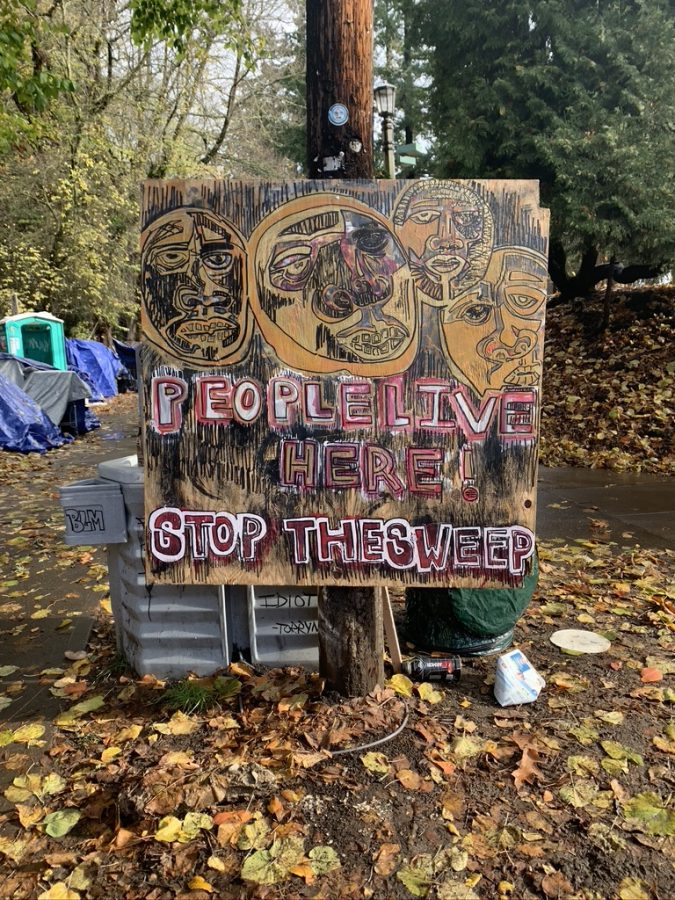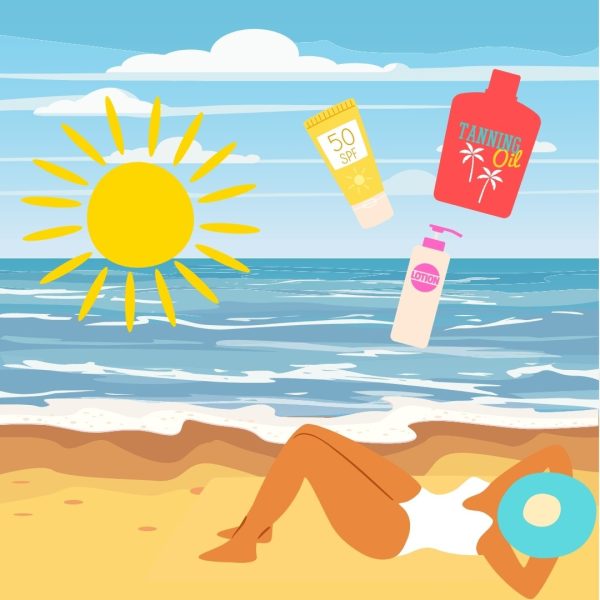Portland houselessness protocol draws controversy
Houseless Portlanders line up to receive food from local activists. The safe park program may provide food in a similar way, but now funded by the city as opposed to activist groups.
UPDATE: To learn more about a recent protocol for houseless people suggested recently in Portland, read Hadley Steele’s “New ‘safe park’ program could help Portland’s houselessness.”
As a result of COVID-19 and the houseless state of emergency Portland, the procedure that Portland follows when removing houseless camps has changed to account for the spread of the disease, as well as economic instability resulting from the pandemic.
Heather Hafer, a public information representative of Portland’s Homelessness and Urban Camping Reduction Program (HUCIRP), says that camps are currently only being removed if they raise public health concerns.
“We receive anywhere from 700–1,100 campsite reports each and every week [from the public], but the number of cleanups that occur vary significantly and have drastically decreased since the pandemic began,” Hafer says. “We used to clean an average of 40–50 [campsites] per week; nowadays we can see anywhere from 1–5 each week and there were no campsite removals for several months after the pandemic began.”
There is no outbreak that the city needs to mitigate.
— John Mayer
According to the City of Portland Website, people who camp must follow specific COVID-19 precautions, in addition to the campsite regulations that were already in place. If they do not follow these precautions, they risk getting removed. Some new regulations that came as a result of COVID-19 include: distancing tents and structures 12 feet apart, 10 feet from transit stops, doorways, or high activity areas, and limiting camps to no more than 8 structures.
The process of removal, according to the City of Portland’s website, is first initiated by posting a removal notice between 48 hours and 10 days before the site must be packed up and vacated. If the occupants do not leave in time, their items that appear to have value are taken to a storage facility and kept for up to 30 days to be claimed and returned, while the rest is thrown out.
In recent months the city has begun removing the camps once again at the urging of businesses and homeowners. The increasing removal of camps has caused concern to activists like John Mayer, Director and Founder of Beacon PDX.
“Recently they have decided that there is a need to return to forcing people to move so that they can clean and sanitize areas that are deemed public health hazards,” says Mayer. “The problem here is that looking at the data, folks living in these camps are not getting sick at a rate anywhere close to those of us who live in houses. There is no outbreak that the city needs to mitigate.”
On Nov. 4, Street Roots reported data supporting Mayer’s claim. Out of the nearly 10,000 people in Oregon who have contracted the virus, only 71 have reported being homeless within the last 12 months.
As of June 2020, the City of Portland began to restart their controversial cleanup initiative. One well-publicized example was seen at Laurelhurst Park, where 100 or more people took up temporary residences along the streets of SE Oak St. and SE 37th Ave.
On Nov. 11, protests broke out against the HUCIRP and the removal of camps that was planned to happen at Laurelhurst the following week. The protesters advocated for allowing people to remain where they were until there is a better option available to them [of places to move]. The protesters also helped to clean the camps in an attempt to make them cleaner so that the city allows them to stay.
“Some people show[ed] up with trucks ready to haul away trash, some people show[ed] up with coffee and cups and others show[ed] up with a friendly ear and a willingness to ask, ‘what do you need?’ of folks living there,” Mayer says.
Mayer also recognizes the fact that the sidewalks along Laurelhurst Park are not where these people ideally should be living. He asserts that the city should accommodate houseless people if they remove them from their homes.
“Nobody is arguing that Laurelhurst is where people should be living for the long-term, only that people who are there should not be forced away until there is an alternative. If ‘cleaning’ were really all that the city was doing here, the people living there would welcome it and be a part of it,” Mayer says.
Although few public housing spaces have been provided throughout COVID-19, Multnomah County has started to provide masks and hand sanitizer, added some shelter spaces in areas like the Convention Center, and provided info and guidance to over 2,000 people experiencing housing instability. Shelters have been recently established outdoors to allow for better adhesion to Center for Disease Control and Prevention (CDC) guidelines.
“Three outdoor emergency shelters that host roughly 100 people in total and provide multiple restrooms and handwashing stations, as well as access to meals [have been established]. The sites (on SE Water and Main, SE Water and Salmon, and NW Broadway and Glisan) began operating in April,” states the Multnomah county website.
Despite cleaning and providing COVID resources, Portland’s houselessness crisis remains as pressing as ever.















